Multiple Intelligences and Artificial Intelligence
Vinyl, Turntable and Phono
Camellia on January, 26th, 2021
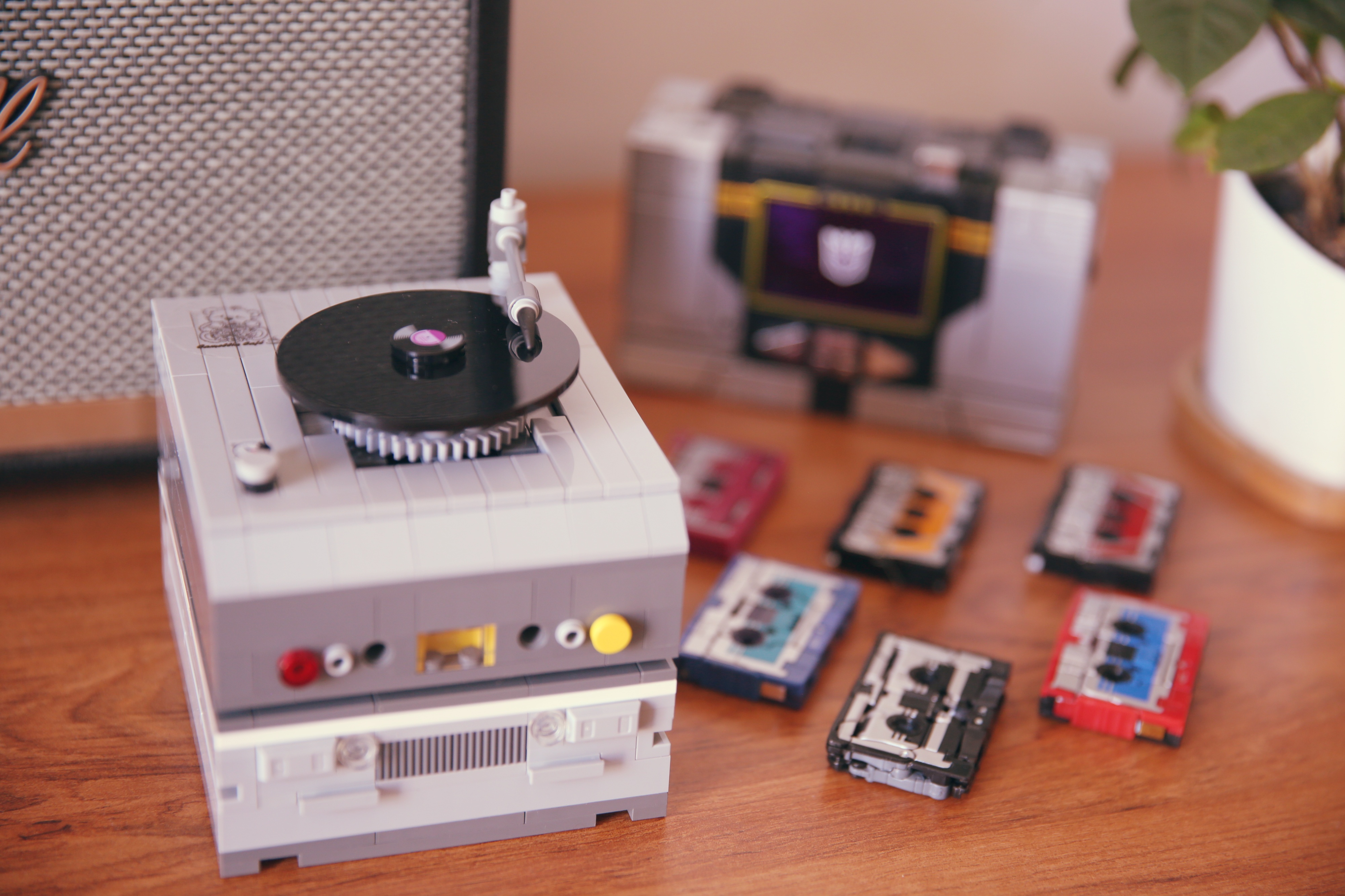
With the resurgence of vinyl over the last several years, a whole new generation is getting into turntables.

Analogue and Digital
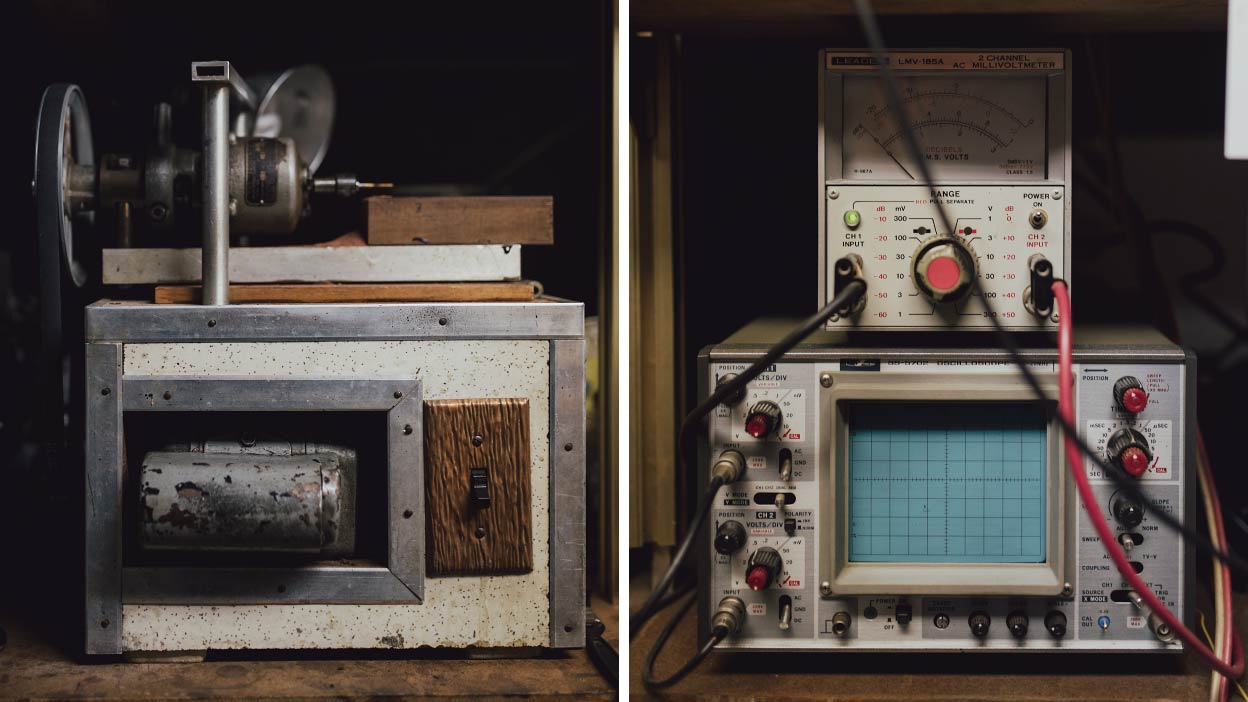 Courtesy of GRADO
Courtesy of GRADO
MP3, iPhone, iPod, etc. are widely used. What they play are digital signals. As we know, digital signal is discrete signal while analogue signal is continuous signal.
Vinyl gives us analogue signal.
Vinyl
A phonograph record, also known as a gramophone record is an analog sound storage medium in the form of a flat disc with an inscribed, modulated spiral groove. The groove usually starts near the periphery and ends near the center of the disc.

Starting in the 1940s, the discs were made from polyvinyl chloride, hence the name vinyl.
In the mid-2000s, gradually, records made of any material began to be called vinyl records, or simply vinyl.
Phonograph records are generally described by:
+ Diameter:12”;10”;7”.
+ Rotational Speed:8-1/3 rpm;16-2/3 rpm;33-1/3 rpm;45 rpm;78 rpm.
+ Time Capacity, determined by diameter and speed:LP[Long Playing] with 12” and 33-1/3 rpm;SP [Single Play] with 10” and 78 rpm or 7” and 45rpm; EP [Extended Play] with 12” and 33-1/3rpm or 7” and 45rpm.
+ Reproductive Quality or Level of Fidelity:high-fidelity;orthophonic;full-range.
+ Number of Audio Channels:Mono;Stereo;Quad.
How to make Vinyl?
Early recordings were made entirely acoustically, the sound being collected by a horn and piped to a diaphragm, which vibrated the cutting stylus. Sensitivity and frequency range were poor, and frequency response was very irregular, giving acoustic recordings an instantly recognizable tonal quality. A singer almost had to put his or her face int eh recording horn. A way of reducing resonance was to wrap the recording horn with tape.
During the first half of the 1920s, engineers at Western Electric, as well as independent inventors such as Orlando March, developed technology for capturing sound with a microphone, amplifying it with vacuum tubes, then using the amplified signal to drive an electromechanical recording head. Soft or distant sounds that were previously impossible to record could now be captured. Volume was now limited only by groove spacing on the record and the amplification of the playback device.
After the Second World War, the use of vinyl became more practical as new record players with light weight crystal pickups and precision-ground styli made of sapphire or an exotic osmium alloy proliferated.
The playing time of a phonograph record depends on the available groove length divided by the turntable speed.
Total groove length in turn depends on how closely the grooves are spaced, in addition to the record diameter.
Note: it is the side wall, not the bottom of the groove that gives the rough.
How to play Vinyl?
Gradually, electrical reproduction entered the home. The spring motor was replaced by an electric motor. The old sound box with its needle-linked diaphragm was replaced by an electromagnetic pickup that converted the needle vibrations into an electrical signal. The tone arm now served to conduct a pair of wires, not sound waves, into the cabinet.

A look at vinyl record grooves at around 1000x magnification. You can see the waveforms of the music itself…
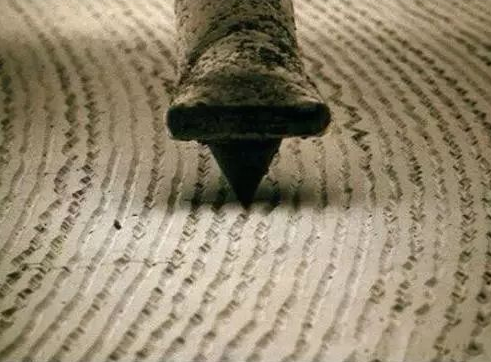
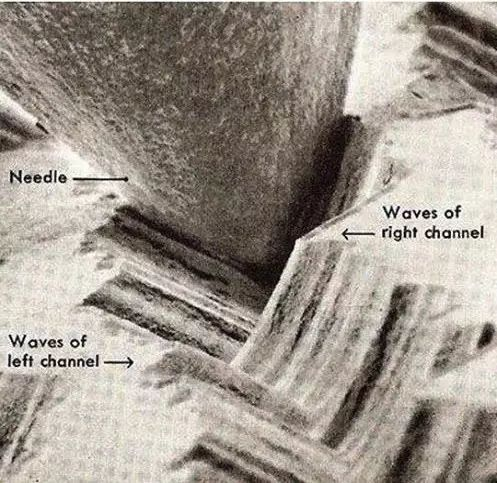
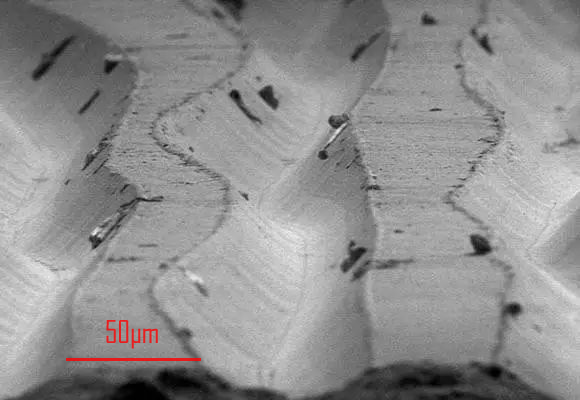
Cassette also give us analogue signals.

Turntable
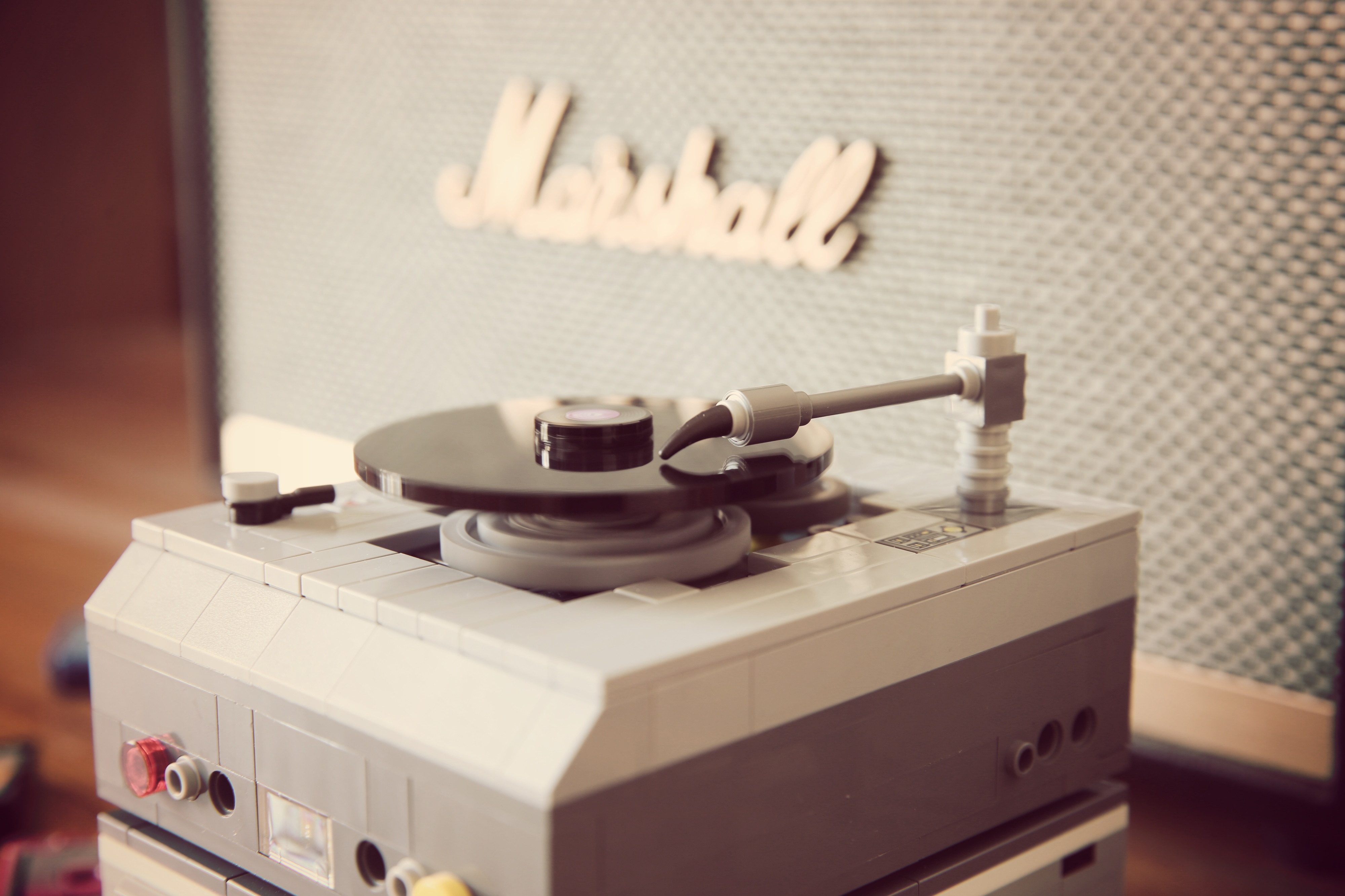
Just use a Servo Motor to drive the turntable, giving a more accuracy speed based on speed feedback.
 Courtesy of Zhivko Terziivanov
Courtesy of Zhivko Terziivanov
Phono
Phono Cartridge
Most systems today, if they accept input from a turntable at all, are configured for use only with magnetic
cartridges. Manufacturers of high-end systems often have in-built moving coil amplifier circuitry, or outboard
head-amplifiers supporting either moving magnet or moving coil cartridges that can be plugged into the line
stage.
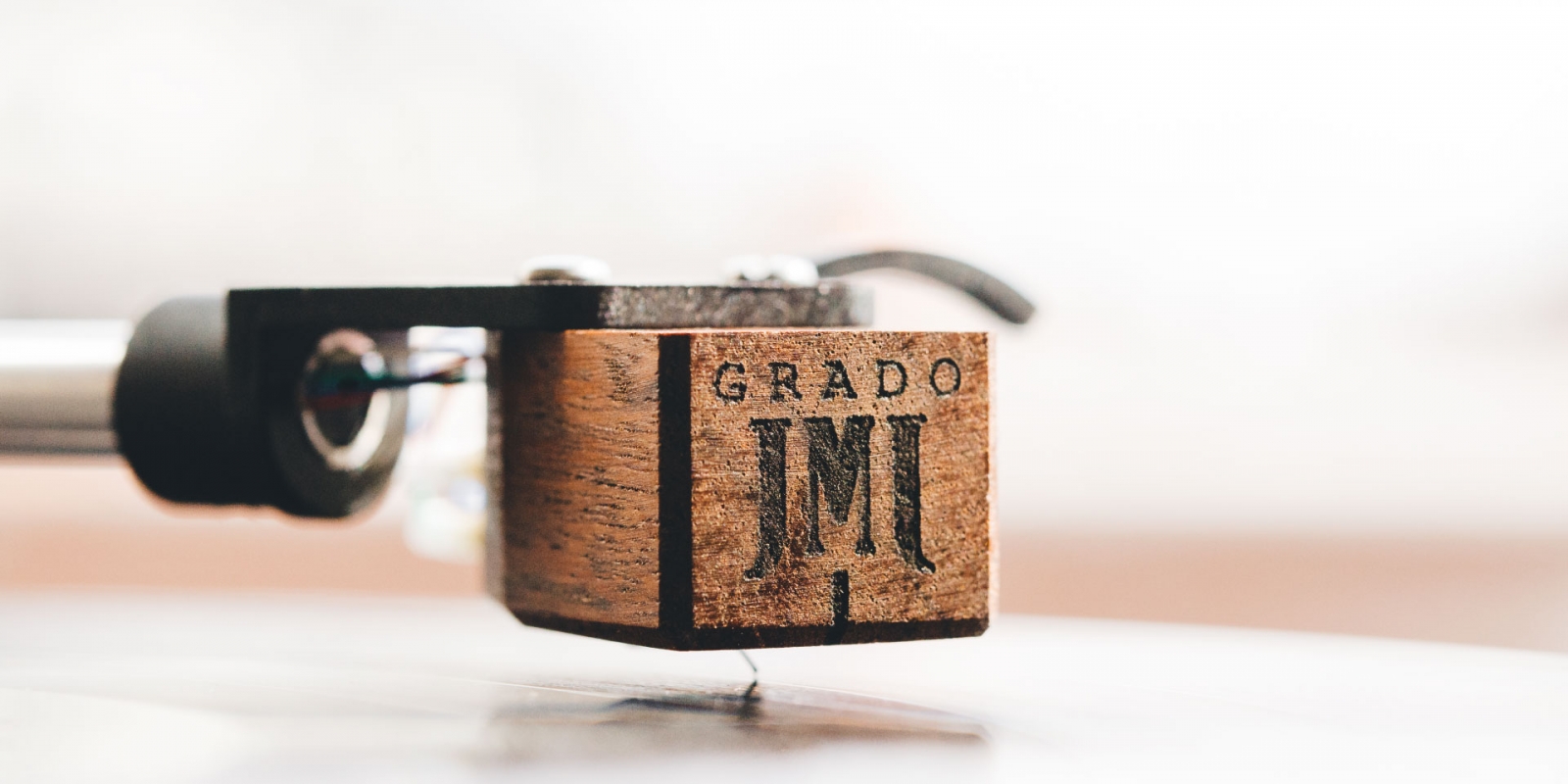 Courtesy of GRADO
Courtesy of GRADO
There are three common designs for magnetic cartridges:
+ Moving Magnet
+ Moving Coil
+ Moving Iron

All operate on the same physics principle of electromagnetic induction. The moving magnet type was by far the most common and more robust of the two, though audiophiles often claim that the moving coil system yields higher fidelity sound.
In each type, the stylus itself, usually of diamond, is mounted on a tiny metal strut called a cantilever, which is suspended using a collar of highly compliant plastic. This gives the stylus the freedom to move in any direction. On the other end of the cantilever is mounted a tiny permanent magnet (moving magnet type) or a set of tiny wound coils (moving coil type).
The magnet is close to a set of fixed pick-up coils, or the moving coils are held within a magnetic field generated by fixed permanent magnets.
In each case, the movement of the stylus as it tracks the grooves of a record causes a fluctuating magnetic field, which causes a small electric current to be induced in the coils. This current closely follows the sound waveform cut into the record, and may be transmitted by wires to an electronic amplifier where it is processed and amplified in order to drive a loudspeaker.
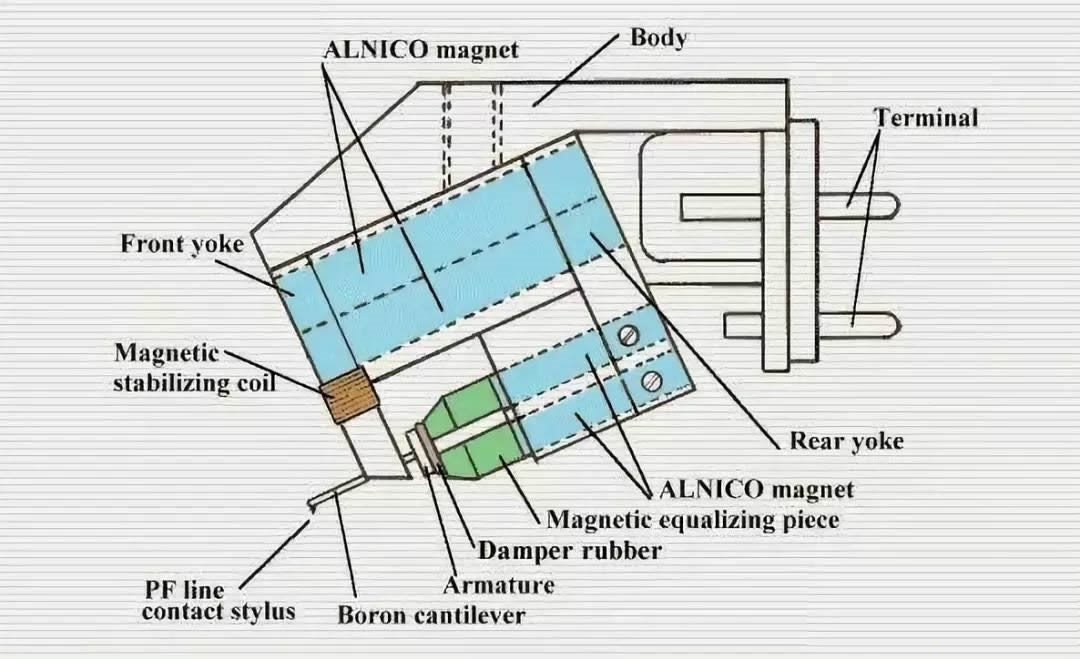
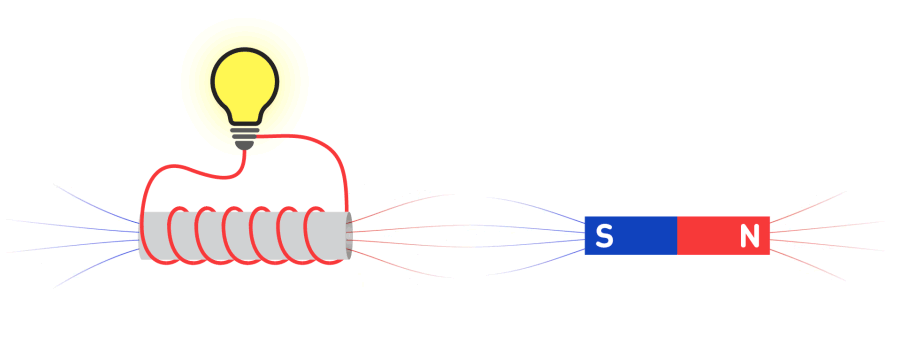 Courtesy of ortofon
Courtesy of ortofon
*** Moving Coil ***
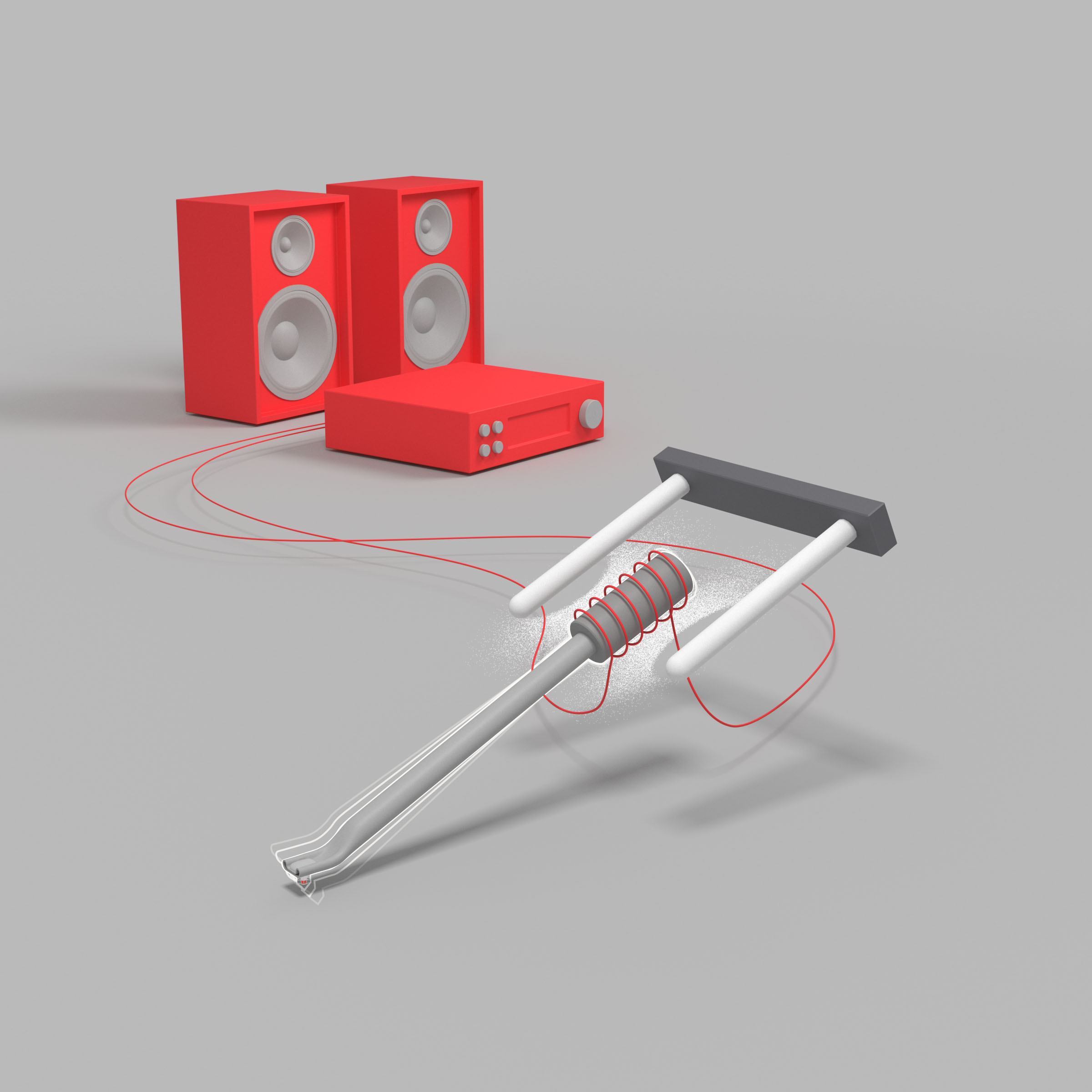 Courtesy of ortofon
Courtesy of ortofon
A powerful fixed magnet is used, and the coils are mounted on the cantilever itself. When the coils move in the field of the magnet, they cut the flux lines of the magnet, and voltages are generated in the coils.
*** Moving Magnet ***
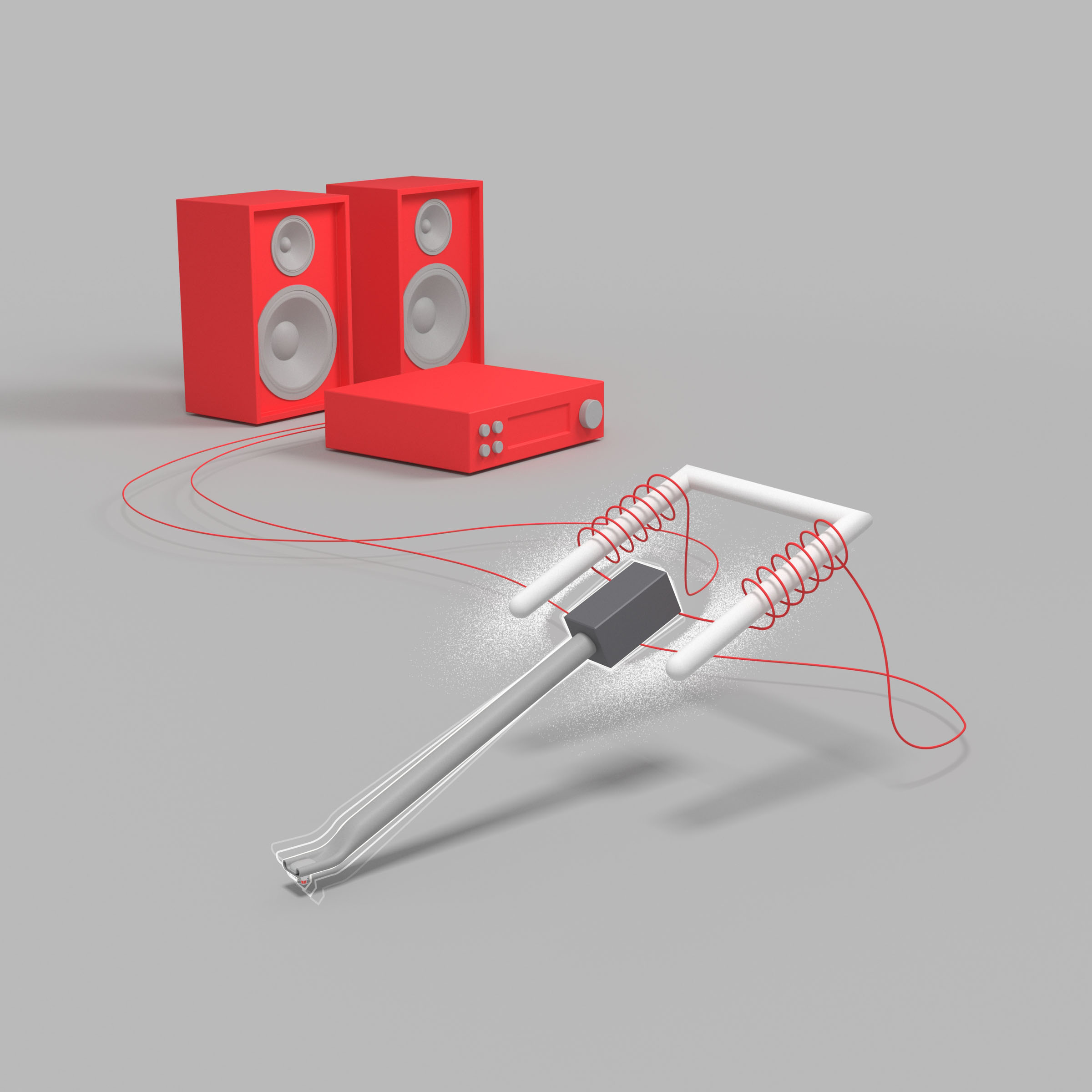 Courtesy of ortofon
Courtesy of ortofon
In a MM cartridge, the magnet is mounted on the cantilever and placed between the set of coils. The cantilever moves by following the tracks of the record, and hence the magnet moves with it. As the magnet gets closer to one of the coils, the magnet’s magnetic field induces a current in the coil, or in other words it generates electrical energy in the coil.
*** Moving Iron ***
In these units, the magnet itself sits behind the four coils and magnetises all four coils' cores. According to its movements, the moving iron cross at the other end of the coils varies the gaps between itself and each of these cores. These variations lead to Reluctance variations, and then flux variation, and last voltage variations as described above.
A few specialist laser turntables read the groove optically using a laser pickup. Since there is no physical contact with the record, no wear is incurred.
However, this "no wear" advantage is debatable, since vinyl records have been tested to withstand even 1200 plays with no significant audio degradation, provided that it is played with a high quality cartridge and that the surfaces are clean.
An alternative approach is to take a high-resolution photograph or scan of each side of the record and interpret the image of the grooves using computer software. An amateur attempt using a flatbed scanner lacked satisfactory fidelity.
A professional system employed by the Library of Congress produces excellent quality.
Stereophonic Sound
Stereophonic sound recording, which attempts to provide a more natural listening experience by reproducing the spatial locations of sound sources in the horizontal plane, was the natural extension to monophonic recording.
In this system, each of two stereo channels is carried independently by a separate groove wall, each wall face moving at 45 degrees to the plane of the record surface (hence the system’s name) in correspondence with the signal level of that channel. By convention, the inner wall carries the left-hand channel and the outer wall carriers the right-hand channel. While the stylus only moves horizontally when reproducing a monophonic disk, on stereo records the stylus moves vertically as well as horizontally.
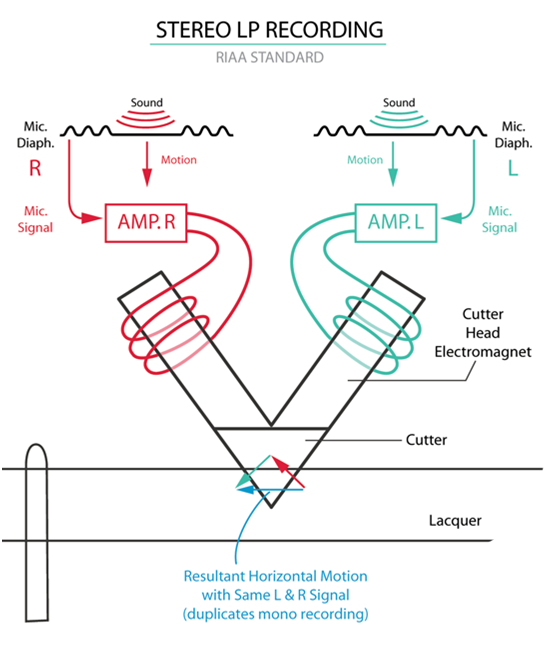
During playback, the movement of a single stylus tracking the groove is sensed independently, e.g., by two coils, each mounted diagonally opposite the relevant groove wall. The combined stylus motion can be represented in terms of the vector sum and difference of the two stereo channels. Vertical stylus motion then carries the L-R difference signal and horizontal stylus motion carries the L+R summed signal, the latter representing the monophonic component of the signal in exactly the same manner as a purely monophonic record. A stereo cartridge reproduces the lateral grooves of monophonic recording equally through both channels.
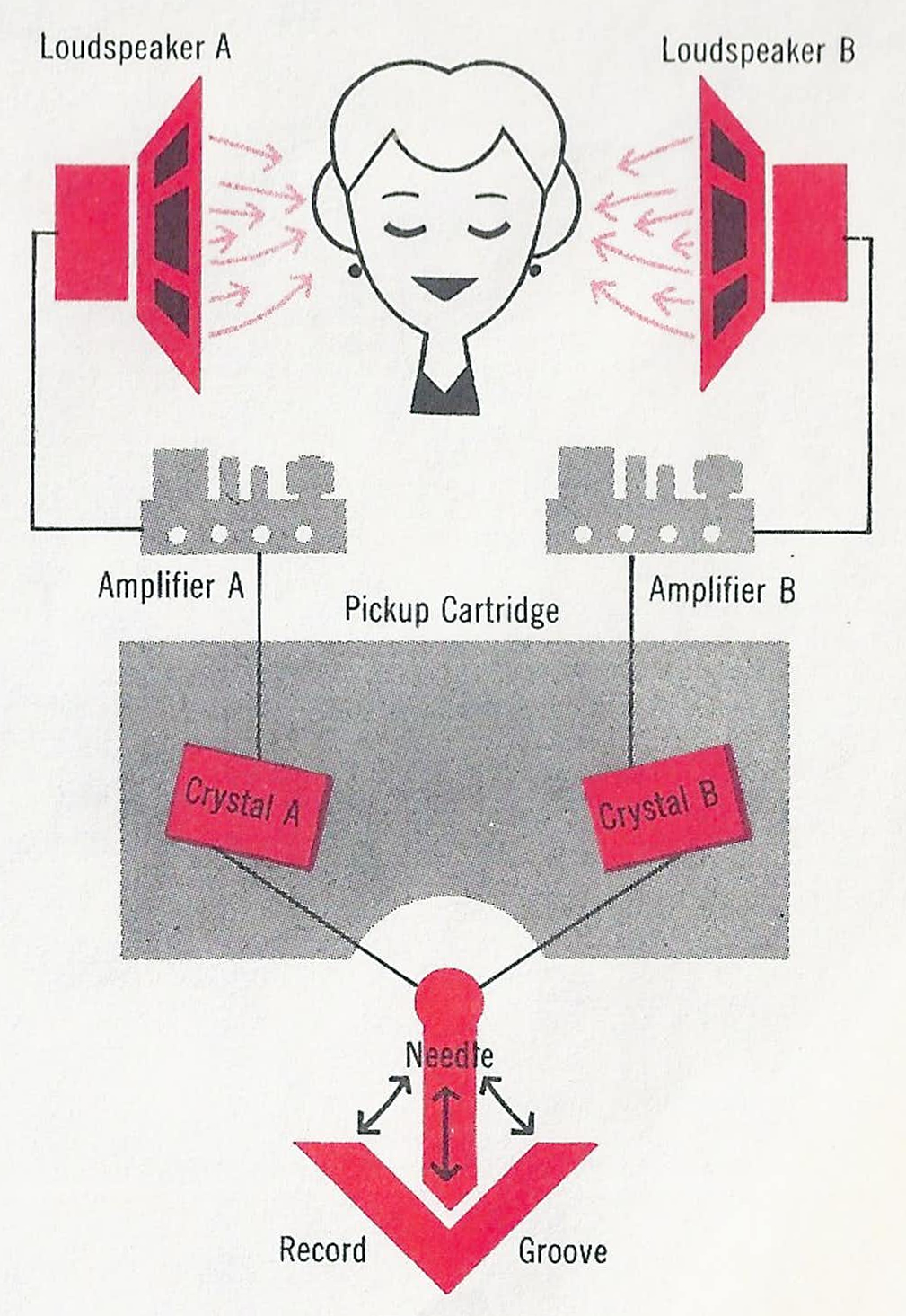
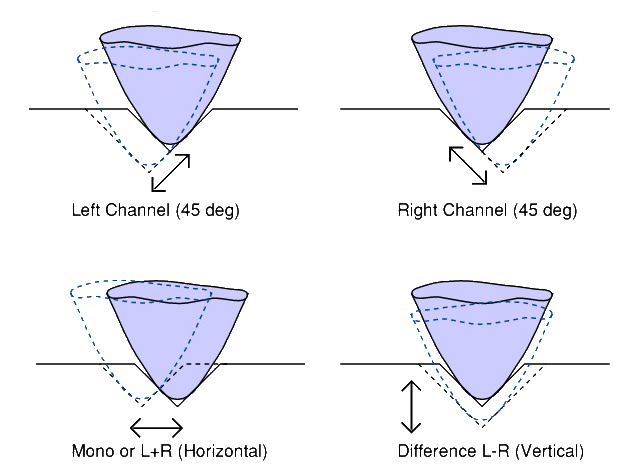
Stylus
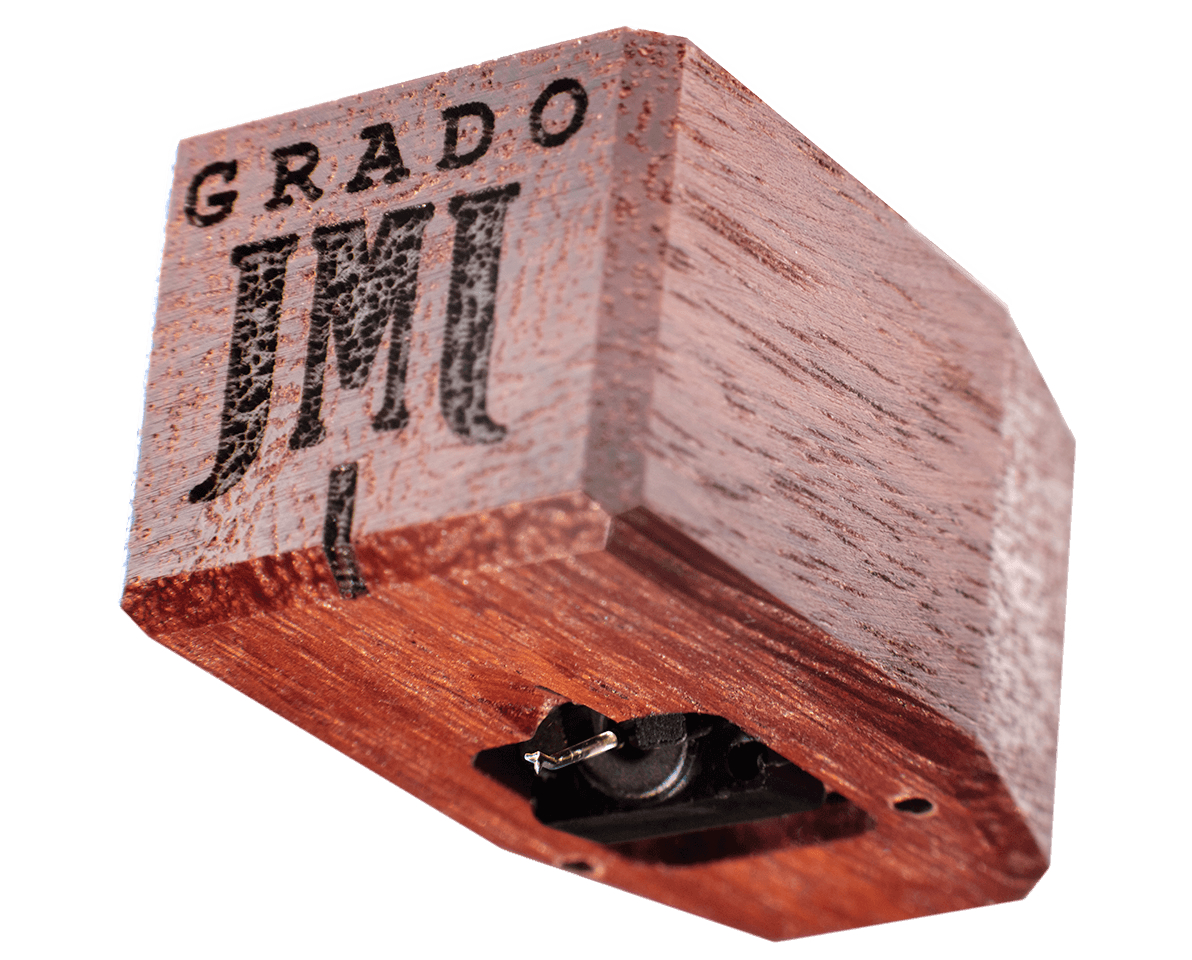 Courtesy of GRADO
Courtesy of GRADO
A smooth-tipped stylus (in popular usage often called a needle due to the former use of steel needles for the
purpose) is used to play the recorded groove. A special chisel-like stylus is used to engrave the groove into the
master record.
The stylus is subject to hard wear as it is the only small part that comes into direct contact with the spinning
record. In terms of the pressure imposed on its minute areas of actual contact, the forces it must bear are
enormous. There are three desired qualities in a stylus: first, that it faithfully follows the contours of the
recorded groove and transmits its vibrations to the next part in the chain; second, that it does not damage the
recorded disc; and third, that it is resistant to wear. A worn-out, damaged or defective stylus tip will degrade
audio quality and injure the groove.
It is made from diamond.
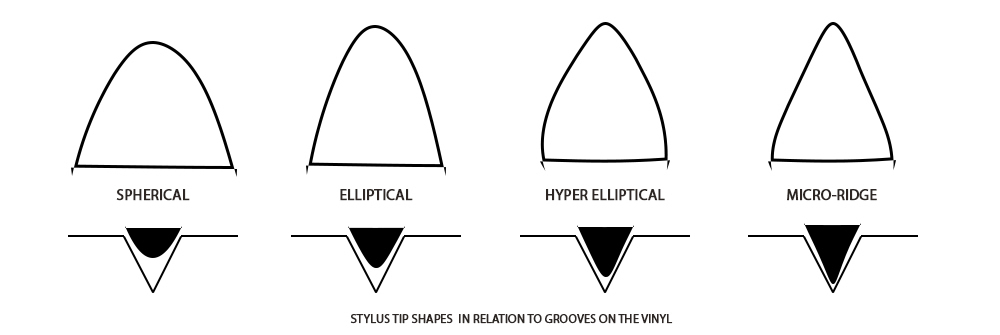 Courtesy of ilovemusic.edu.in
Courtesy of ilovemusic.edu.in
There are many shapes:
+ Spherical:
Spherical tips are the most affordable and the easiest to use. They have the largest surface radius and make the least amount of surface contact. Hence, they are the most longest-lasting.
Spherical tip needles are also commonly known as Conical tips.
+ Elliptical:
The Elliptical tip shape stylus has a smaller surface radius and larger contact surface. Hence they can track grooves more accurately. This helps read more information from the grooves on the record giving enhanced music quality. These wear out faster and one needs to take time to align them for quality output.
+ Hyper-elliptical:
Smaller grooves in the records account for higher frequencies and the hyper-elliptical allow for even better quality sound. They are more elliptical and more precise. These are expensive stylus tips to manufacture and when aligned to precision give precision sound.
+ Micro-ridge:
Computer-designed micro ridge tips are the most accurate. They are very close to cutting stylus (the ones used to cut or record a Record). Super expensive to manufacture and super expensive to use.
Phono preamp
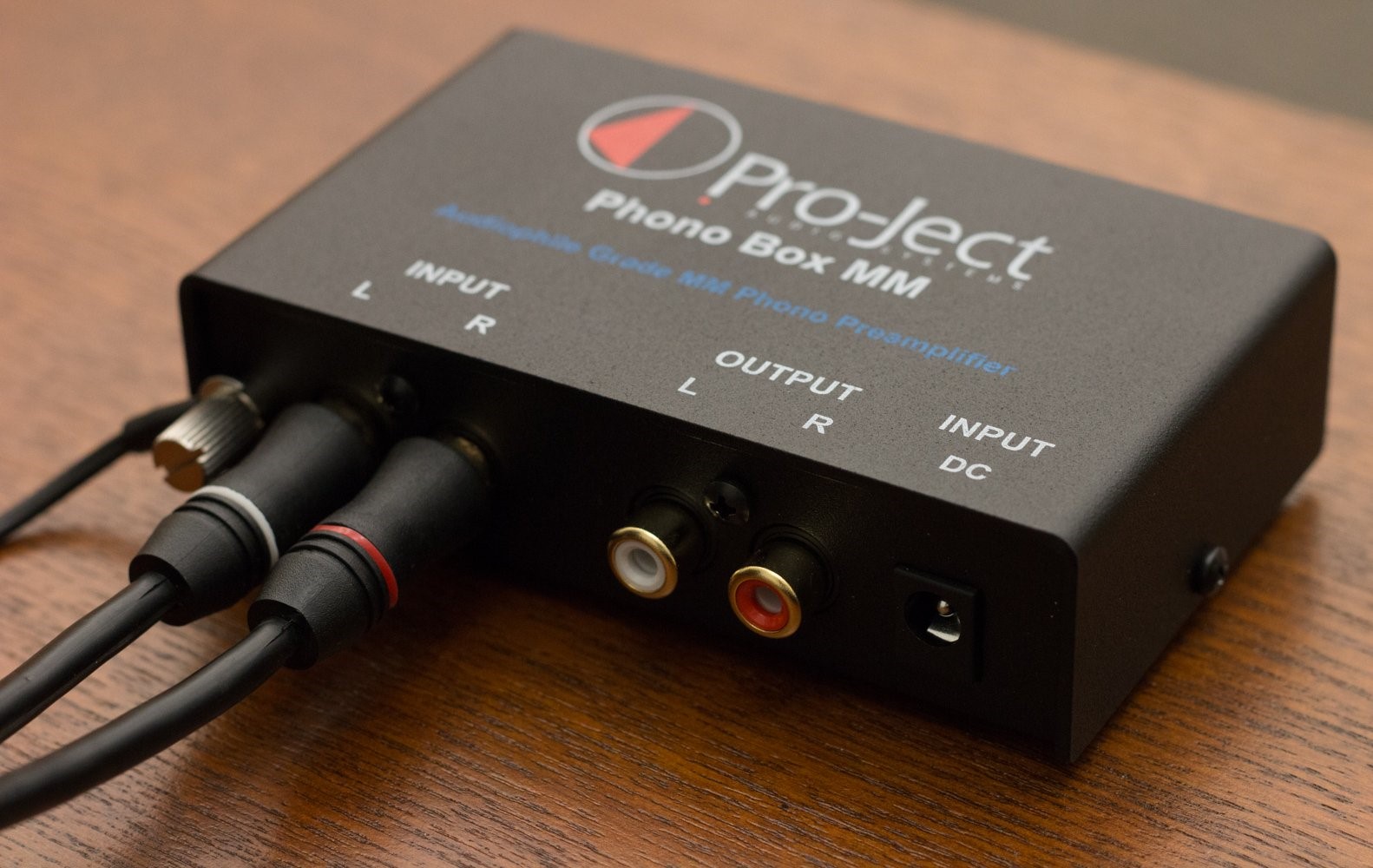
A phono preamplifier, also known as a phono stage, is an audio component that amplifies the signal from your turntable to a level that allows you to connect it to your sound system the same way you would with any other audio source.
 Courtesy of ilovemusic.edu.in
Courtesy of ilovemusic.edu.in
+ Turntables with built-in Phono Preamps
Some newer turntables come with a phono stage built in. There is no real rhyme or reason to which tables have one built in.
If you already have a turntable but aren’t sure, just try it -- you won’t hurt anything. If you connect your turntable up to your system and the volume level is fine with no distortion, you have a turntable with a built-in phono stage.
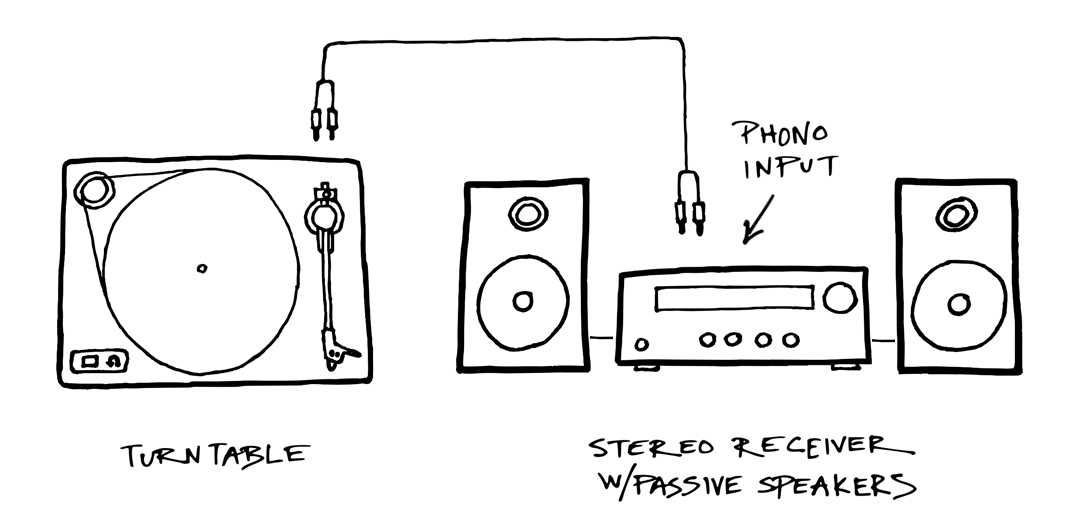 Courtesy of ilovemusic.edu.in
Courtesy of ilovemusic.edu.in
+ Receivers or amplifiers with built-in phono preamps
If you are using a vintage receiver or amp manufactured before around 1980, it is highly likely that the phono section is built in. The big clue to look for is on the back of your unit, where a set of left and right input connections will be labeled phono with a ground screw next to them. Most newer amps and receivers do not have a phono preamp built in.
We have seen some receivers that have an input labeled phono, but it is actually just labeled that way for convenience and does not have a phono preamp—just the label. These will not have the ground screw.
Again, just like with one built into your turntable, if you connect things up and everything sounds fine, then you have a built-in phono preamp. Remember to connect the ground wire from your turntable if it has one as well.
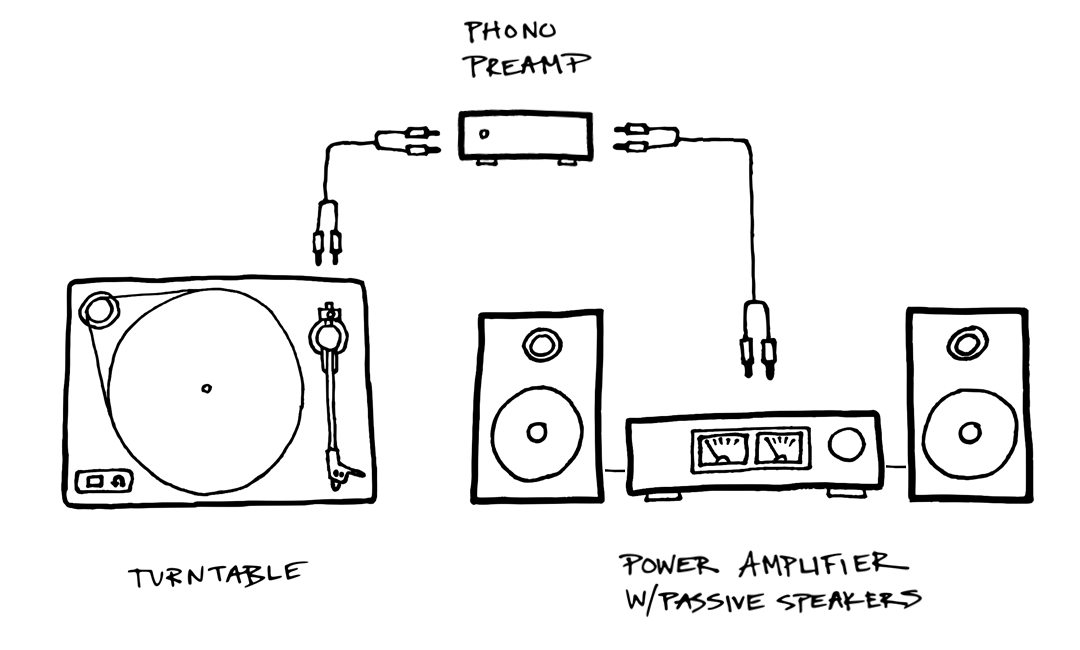 Courtesy of ilovemusic.edu.in
Courtesy of ilovemusic.edu.in
+ Choosing the right phono preamp
There are two types of phono preamps. Why is this? Well, there are two basic categories of cartridges that go on your turntable. You may have seen references to MM (moving magnet) or MC (moving coil). Most turntables that come with the phono cartridge have a moving magnet (MM) type. A moving coil type has less output than the MM type, so it needs even more amplification. If you upgraded your turntable’s cartridge, you may have gone with a moving coil design and will need a phono preamp capable of this extra boost.
The good news is, just about every single phono stage on the market that can handle a MC cartridge can also work with an MM cartridge. You will usually see a little switch to change between the two. If you were to connect a MC cartridge to an MM phono stage, the sound would be ok, but probably not loud enough. However, if you connect an MM cartridge to a MC phono input, the sound will probably be distorted.
Audio Cable
RCA
RCA connector, originally called a phono connector, is a type of electrical connector commonly used to carry audio and video signals. The name RCA derives from the company Radio Corporation of America which introduced the design in the 1930s. The connectors male plug and female jack are called RCA plug and RCA jack.
The word phono in phono connector is an abbreviation of the word phonograph, because this connector was originally created to allow the connection of a phonograph turntable to a radio receiver. RCA jacks are often used in phono inputs, a set of input jacks usually located on the rear panel of a preamp, mixer or amplifier, especially on early radio sets, to which a phonograph or turntable is attached.
Stereo audio applications use either black and red, grey and red or white and red RCA connectors; in all three cases, red denotes right. White or purple may also be replaced by black. Most modern equipment with RCA connectors for recording devices simply uses white and red for all stereo pairs, whether record or playback.
3.5mm plug
The 3.5 mm versions are commonly called mini-phone, mini-stereo, mini jack, etc.
Artifical Intelligence
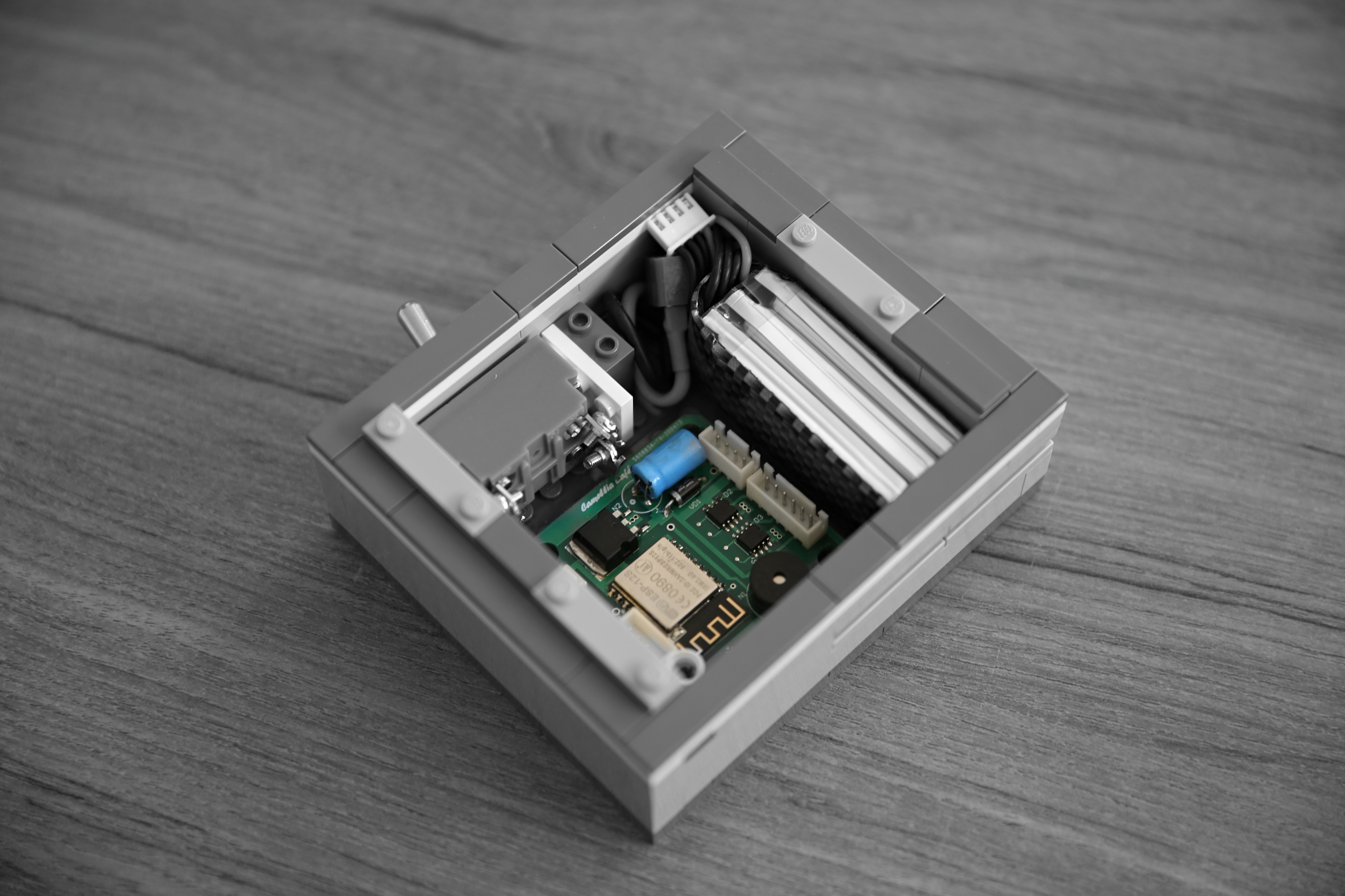
The Camellia Mini Controller give intelligence to the Phono.
Via the Internet of Things, play it remotely.
Via Servo Motor, the playing speed is more accuracy and is adjusted according to your own.
Via Machine Learning Technology, the Phono becomes a robot. It can remember your last choice, read your mood, and play vinyl according to the environment.

Music, after all, is something that brings joy to our lives. Vinyl gives us a way to increase the joy factor and explore music in an exciting ways. That joy is the essence of the vinyl revival. It’s why people are gleefully purchasing records again.





























